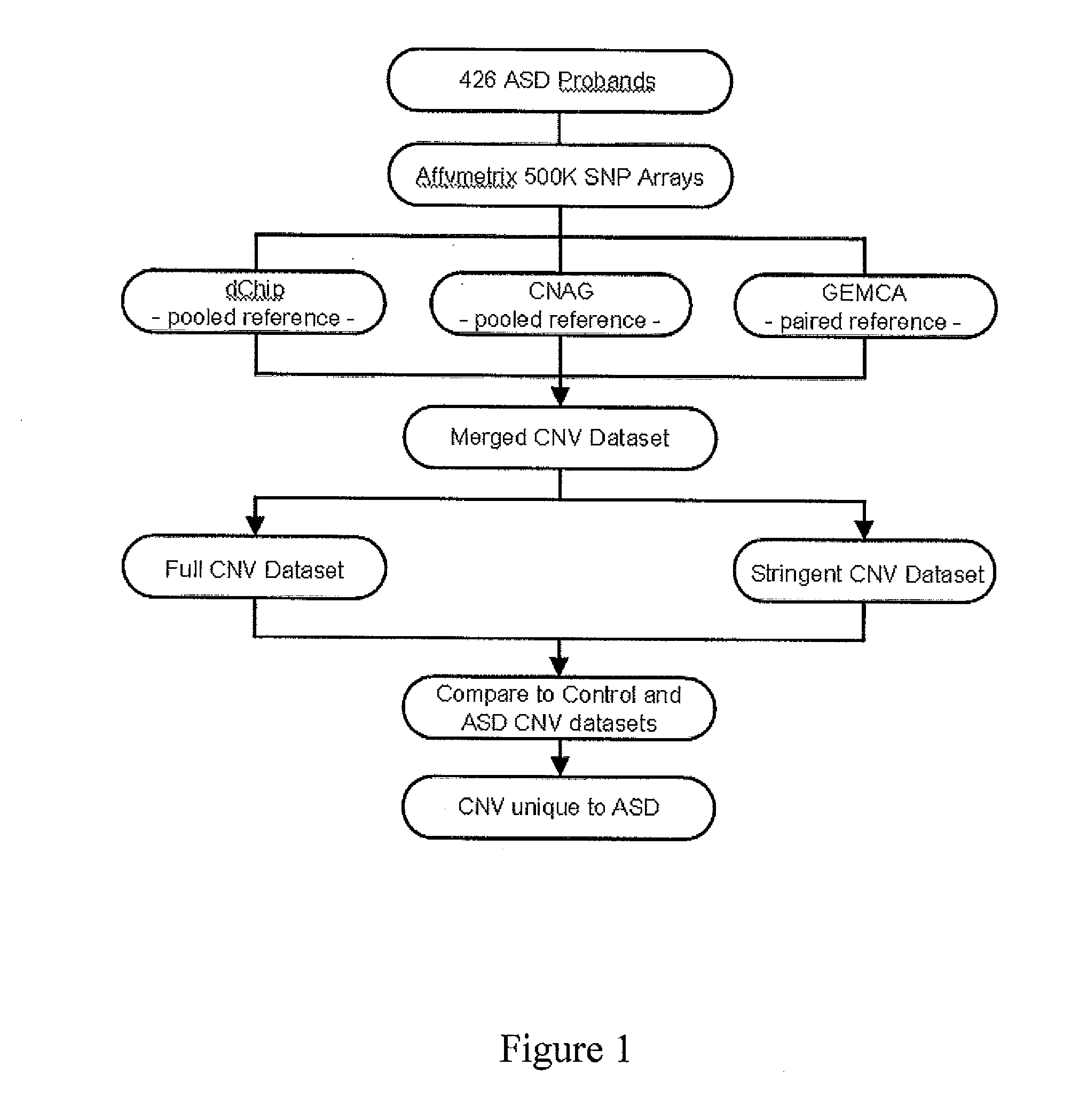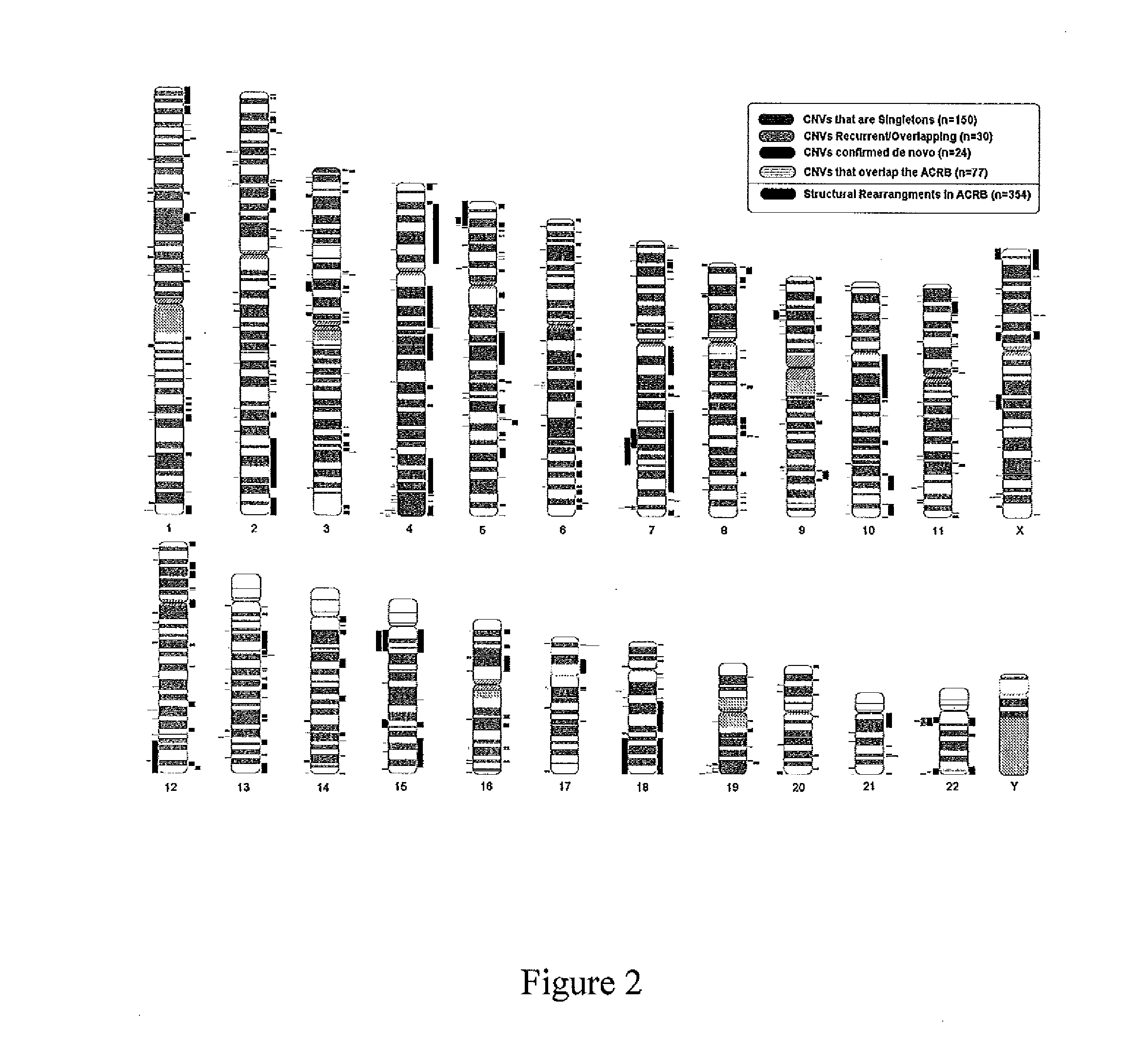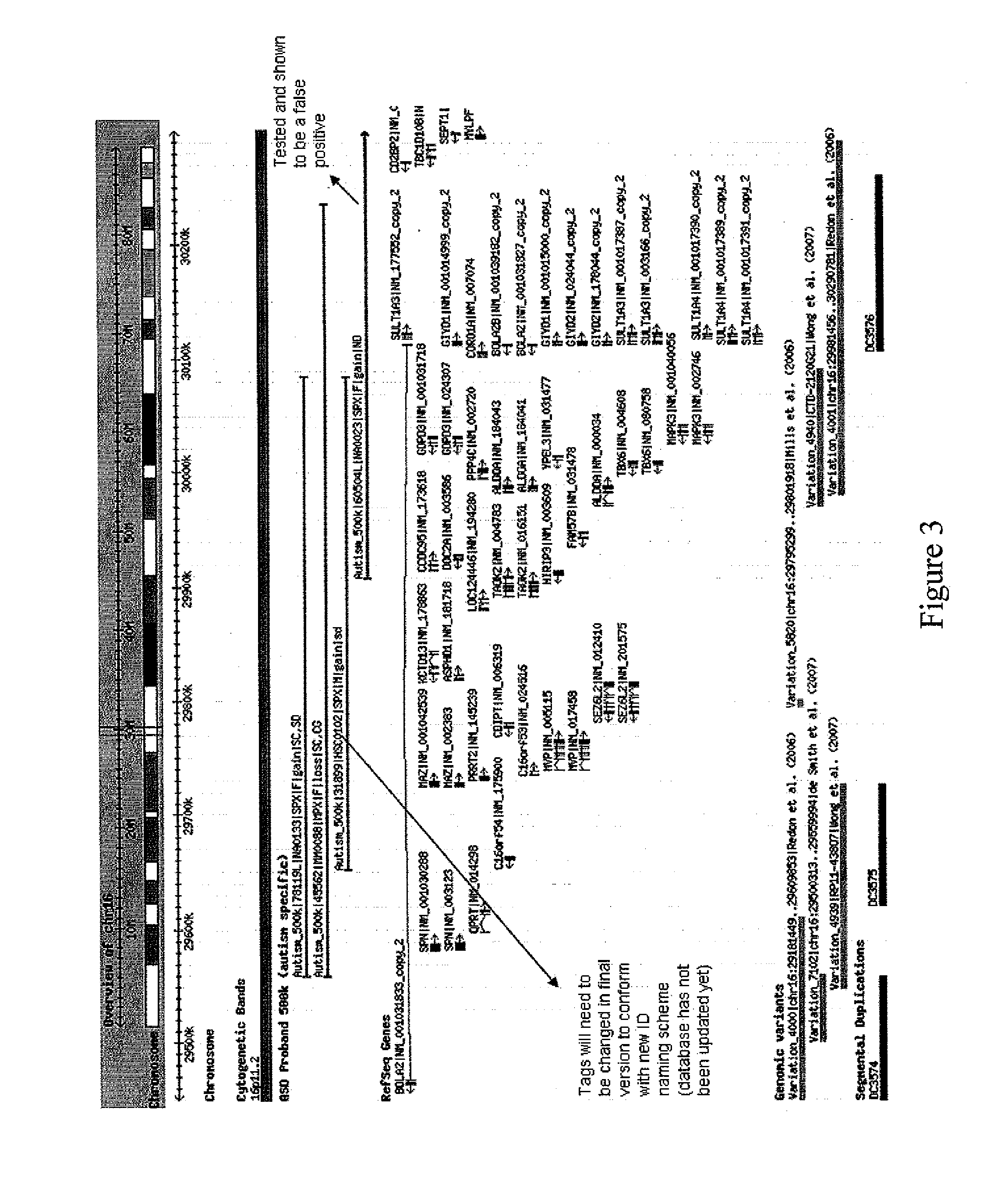Biomarkers for autism spectrum disorders
a technology for autism spectrum disorders and biomarkers, applied in biochemistry apparatus and processes, chemical libraries, combinational chemistry, etc., can solve the problems that no specific genes within these linkage peaks have unequivocally been shown to contribute to autism, and have not yet been validated, so as to diagnose the condition
- Summary
- Abstract
- Description
- Claims
- Application Information
AI Technical Summary
Benefits of technology
Problems solved by technology
Method used
Image
Examples
example 1
DNA Samples and Population Structure
[0040]The study included 426 ASD families. All of the index cases met Autism Diagnostic Interview-Revised (ADI-R) and Autism Diagnostic Observation Schedule (ADOS) criteria or on a clinical best estimate (Risi et al. J Am Acad Child Adolesc Psychiatry 2006; 45(9):1094-103). Thirty-two of these carried a cytogenetic chromosome rearrangement; 18 were detected by karyotyping 328 of 412 samples that originated from child diagnostic centres at the Hospital for Sick Children in Toronto and from St. John's, Newfoundland; 14 were already known to carry karyotypic anomalies (see Table 1 for information on these 32 patients). Affected and unaffected siblings were also assessed, and 56% (237 / 426) had one child (simplex) and 44% (189 / 426) had more than one child (multiplex) with ASD. Most cases were screened for fragile X mutations (75%) and if detected they were not included in the study. Most experiments were performed on blood genomic DNA (80%), otherwise ...
example 2
PTCHD1 as a Marker of ASD
[0071]As set out above, a genome scan with Affymetrix 500K SNP Arrays was used to identify a CNV deletion on chromosome Xp22.11 that spans exon 1 of the PTCHD1 gene. Exon 1 is shown bolded in FIG. 7 spanning nucleotide positions 1-359. The Cdna sequence of the PTCHD1 gene (NM—173495) as well as the amino acid sequence of the corresponding encoded protein is illustrated in FIG. 7 which illustrates a genomic size of: 59325, an exon / coding exon count of 3 encoding a protein of 783 amino acids.
[0072]The deletion was determined to be an ˜156 kb deletion on Xp22.11 on a male proband. The physical position of this CNV is chrX:22, 962,800-23, 119,000 (UCSC 2004 Assembly). The deletion is flanked by SNP probes rs7055928 and rs1918560 (at 22.956 and 23.133 Mb from the Xp terminus, respectively). The most proximal and distal SNPs (from the Affymetrix SNP microarrays) within the deleted region, as determined by the SNP microarray analysis, are rs7879064 (23.119 Mb) and ...
example 3
Identification of Additional Markers of ASD
[0076]By sequencing the entire coding region of PTCHD1 in 900 unrelated ASD cases, six missense mutations were identified in six unrelated ASD probands (Table 7, FIG. 8). For clinical details see Table 8.
TABLE 7XCINo. ofStatus ofControlSex ofFamilyCarrierPopulationFrequencyChromosomesSubject IDExonMutationNucleotideProbandTransmissionTypeMotherAncestryin ASDTestedFamily 11167-kb deletion,MMotherMultiplexSkewedEuropean1 in 4272067disrupts PTCHD1(M = 769gene at Xp22.11F = 1298)Family 11167-kb deletion,MMotherMultiplexSkewedEuropean1 in 4272067disrupts PTCHD1(M = 769gene at Xp22.11F = 1298)Family 22I173V517A > GMMotherMultiplexRandomEuropean\Mixed2 in 900659(M = 219F = 220)Family 32I173V517A > GMMotherSimplexRandomEuropean2 in 900659(M = 219F = 220)Family 42V195I583G > AMMotherSimplexNCEuropean1 in 900659(M = 219F = 220)Family 52ML336-7II1008-MMotherSimplexRandomAsian1 in 900751*9GC > TA(M = 249F = 251)Family 63E479G1436A > GMMotherMultiplexRa...
PUM
| Property | Measurement | Unit |
|---|---|---|
| volume | aaaaa | aaaaa |
| spectrum | aaaaa | aaaaa |
| disorders | aaaaa | aaaaa |
Abstract
Description
Claims
Application Information
 Login to View More
Login to View More - R&D
- Intellectual Property
- Life Sciences
- Materials
- Tech Scout
- Unparalleled Data Quality
- Higher Quality Content
- 60% Fewer Hallucinations
Browse by: Latest US Patents, China's latest patents, Technical Efficacy Thesaurus, Application Domain, Technology Topic, Popular Technical Reports.
© 2025 PatSnap. All rights reserved.Legal|Privacy policy|Modern Slavery Act Transparency Statement|Sitemap|About US| Contact US: help@patsnap.com



